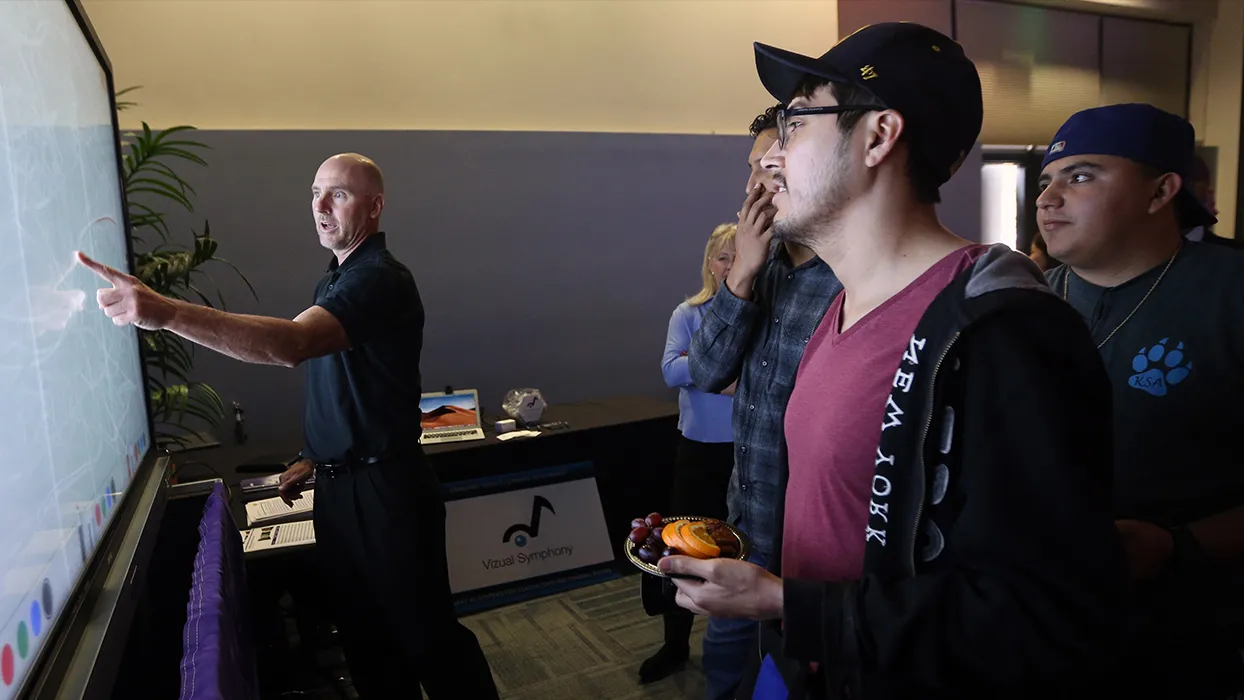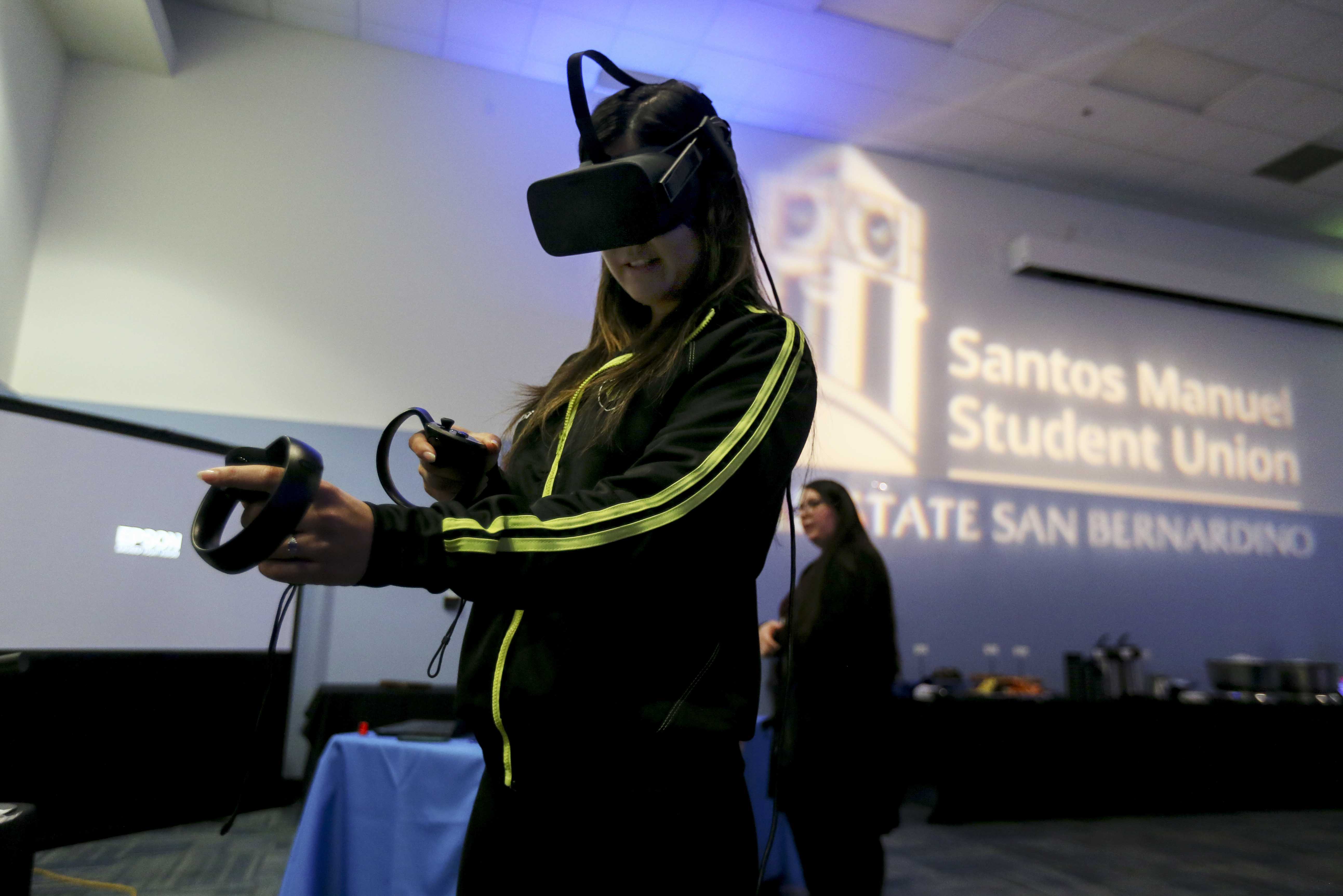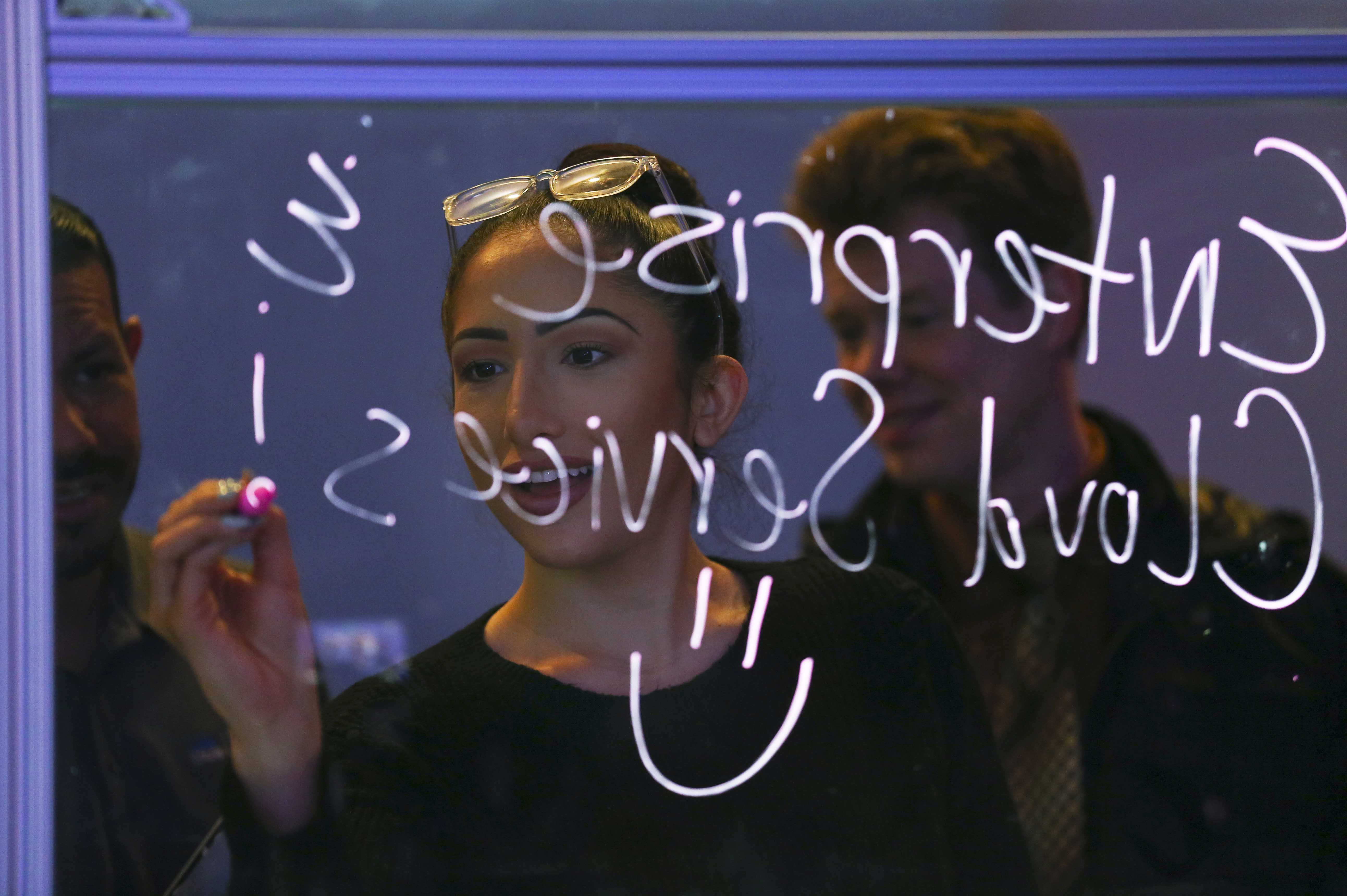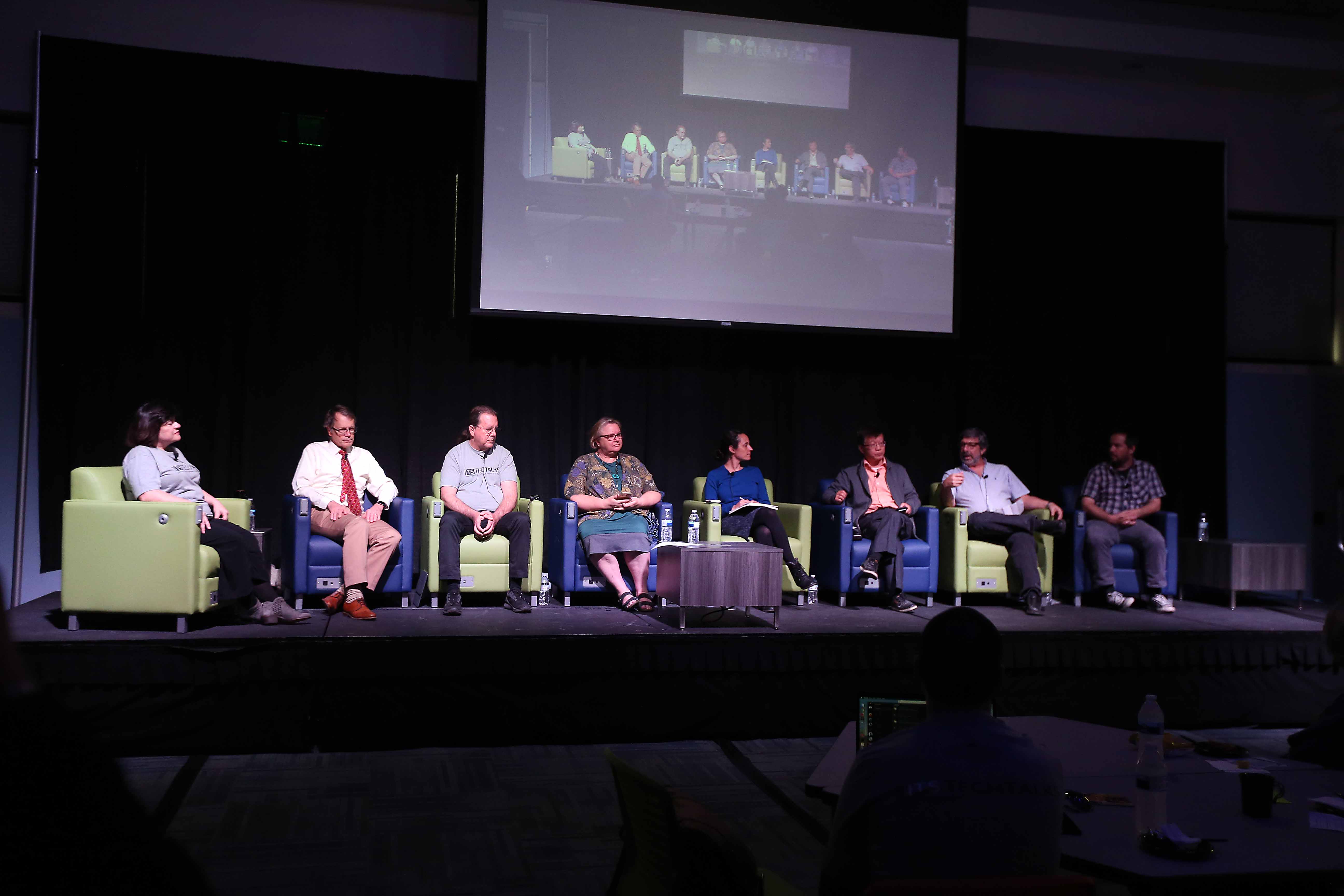Joe Gutierrez Office of Strategic Communication (909) 537-5007 joeg@csusb.edu

Photos by Michael Moody/CSUSB Cal State San Bernardino’s Division of Information Technology Services held its third annual ITS Tech Talks on April 16 at the Santos Manuel Student Union Events Center, showcasing teaching and learning technologies in support of the California State University’s Graduation Initiative 2025. ITS Tech Talks provided an opportunity for faculty and staff to meet and exchange ideas about technology in education, explore current and emerging technologies, and learn about projects that are enhancing the teaching and learning experience. The event featured presentations on various applications, course design consultations, distance learning and video conferencing solutions instructional multimedia demonstrations, emerging technology displays assistive technology demonstrations and accessibility consultations. One of the day’s highlights was a panel discussion, moderated by Mihaela Popescu, Academic Technologies and Innovation faculty director, during which various faculty members talked about their experiences in using technology. Kurt Collins, a professor of art and Scott Vance, a lecturer in the music department, talked about their experiences and suggestions to fellow faculty members in using virtual reality (VR) in their classrooms and at Academic Technologies and Innovation (ATI). Collins said one problem faculty members initially encounter in using virtual reality is that they want to use it to substitute for a situation or scenario that already exists. A good example of using virtual reality would be having students and faculty interact with a dinosaur. “With VR you can make that happen,” Collins said. Terry Nelson, a professor in world languages and literature, talked about using Slack, a free app/browser that integrates features of email, text messaging, Facebook and discussion boards. Nelson, a well-known innovator in educational games for learning, said students found Slack-assisted communication to be useful for their learning. Nelson that when she recently logged onto Slack for one of her classes, she found that the students had been involved in a two-hour discussion regarding one of the class topics involving the French Revolution. The application “was friendly and useful. Students were really talking to each other,” Nelson said. “You can’t beat that for teaching and learning.” Arianna Huhn, an assistant professor of anthropology and director of the CSUSB Anthropology Museum, recreated the museum’s successful exhibition, In|Dignity, as an immersive environment using 360-degree video that brings the stories and artifacts to life. Huhn urged faculty to use the 360-degree technology to get students more involved. “It’s an experience you want your students have,” Huhn said. “If you can record (an event or display) with a 360 camera, you can use it later with the help of ATI.” Michael Chen, an associate professor of education leadership and technology, said one of the biggest challenges facing instructors is that they are using classrooms that were designed for the 19th century form of teaching with desks and chairs that are immovable. Chen said students become more involved where movable furniture makes small group work more meaningful. “Learning spaces be renovated to support active learning activities,” Chen said. Professor Larry Mink and Assistant Professor Andreas Beyersdorf, both of the chemistry and biochemistry department, developed and implemented an award-winning, open source, adaptive learning set of online homework for CHEM 216 General Chemistry II on the Smart Sparrow platform. Their work builds on research regarding the positive impact of personalized learning in STEM disciplines. Mink urged fellow faculty members not to be intimidated by emerging technologies and innovations. “Just try it,” Mink said. “See what happens.” For more information, visit the Tech Talks 2019 webpage. For more information on Cal State San Bernardino, contact the university’s Office of Strategic Communication at (909) 537-5007 and visit inside.csusb.edu.


